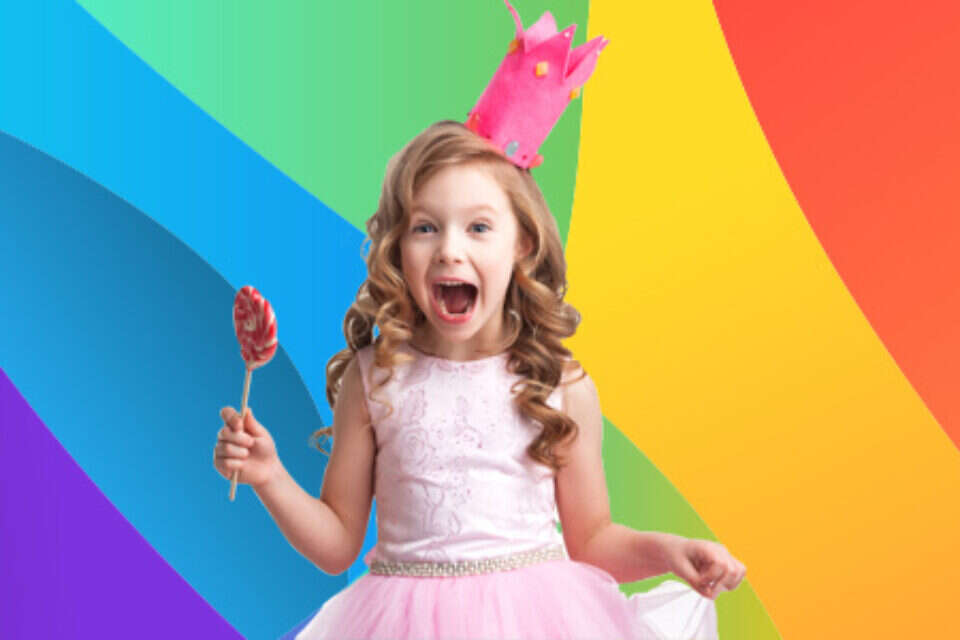Dressing up during Purim is a colorful and joyful carnival for most people, even for most children, but you have to take into account that there are children who are reluctant to dress up - and the reasons for this can be many, from insecurity to fear of changing identities.
It often happens that the parents agree with their child on a costume that he will dress up as, buy it and then when the big day comes - he is not ready to wear it.
If this happens, you don't need to make a big deal out of it, and you can examine in an intimate conversation with the child what bothers him about the costume.
In addition, in order to avoid heartache, it is advisable to plan the costume in advance together with the child.
It is even recommended to measure it after the purchase so that the child gets used to it and learns to like its new appearance.
In order for you to be able to deal with such a situation, Dr. Belha Parintah, senior lecturer and deputy head of the master's degree program in educational psychology at Ahva Academic College, explained to us what is behind the decisions that are made about costumes - and even included some tips. Most importantly - don't forget to have fun!
Purim celebrations in Tel Aviv (archive), photo: Oren Ben Hakon
noise and commotion
There are young children for whom the commotion of the holiday accompanied by rattles and masks makes them anxious.
Therefore, they should be prepared in advance in the days leading up to the holiday and explain to them that during it we will see people with masks and costumes and hear noises.
They should be exposed a little through small demonstrations to what they might see and hear, and explain to them the meaning of these stimuli.
These fears should not be underestimated and denied, on the contrary - they should be helped to understand what is behind them.
For example, you can tell them this: "I understand that these masks and/or these noises scare you. It's really something we're less used to. These are part of the Purim events, and I'll be here to help you and take care of you. It won't harm you and it won't hurt you."
Purim carnival in Bat Yam (archive), photo: Bat Yam municipality
An emotional refuge
Costumes have a considerable emotional contribution for the children who play in them.
Sometimes, just wearing the costume and playing with it is a real emotional escape for the child.
By wearing the costume, the child can project his hidden fears and desires into the character he portrays with the costume.
So, for example, a child who is very afraid of some monster, can wear a wizard costume or any other scary costume, and thus pretend to be a monster and face his fears.
In the same way, a girl who is jealous of another girl can wear the queen costume, and thus pretend that she is the queen and she decides how she and the others will be treated.
Another advantage of the costume game is the ability to bring out aggression and nerves through the costume (for example, in a soldier or warrior costume) and in a way that does not endanger anyone.
What does the costume say about the teenager?
Even at mature ages, costumes have an important role, especially in defining the self-identity of the child or teenager.
This is especially noticeable when the children come to school and no longer want to dress up as a hero or a soldier, but ask for a more unique costume, which will represent who they are or who they admire.
In adolescence, this process is even more extreme - and many teenagers use a costume as a way to disguise who they really are and pretend, if only for a day, that they are someone else.
We see quite a few teenage girls' costumes that express extroverted sexuality.
This is also their way of expressing hidden urges and urges during a day when cultural legitimacy is given to it.
Children at the Purim celebrations at Shaar Hanegev, in 2022, photo: Dodo Greenspan
A learning opportunity
The holiday calls for a lot of sweets around the delivery of the parcels in the vicinity of the children, who return from the settings with parcel deliveries, receive deliveries from their relatives and more.
This is an opportunity to discuss and mediate the degree of restraint and to talk with the children about concepts such as dosage, overcoming cravings and the damage of sweets to the health of the mouth and body.
Here, too, the holiday is an opportunity to combine celebration and learning - everything in moderation.
Tips for the Purim celebrations:
The child must be prepared for the noises and sights he is expected to be exposed to during the holiday.
It is good to allow experimenting with costumes before the holiday.
This will create habituation to the costume, prolonged enjoyment of it and the possibility of prolonged and calmer mediation before the holiday, especially in children of preschool age.
You can be creative and expand the range of ideas for costumes beyond what is found in stores, and take advantage of the opportunity to develop originality, entrepreneurship and innovation and together create something amazing and different.
Do not instill pressure around dressing up.
The idea that should be conveyed is that there are a variety of ways to be happy together as a family during the holiday.
Dr. Belha Parintah,
were we wrong
We will fix it!
If you found an error in the article, we would appreciate it if you shared it with us

